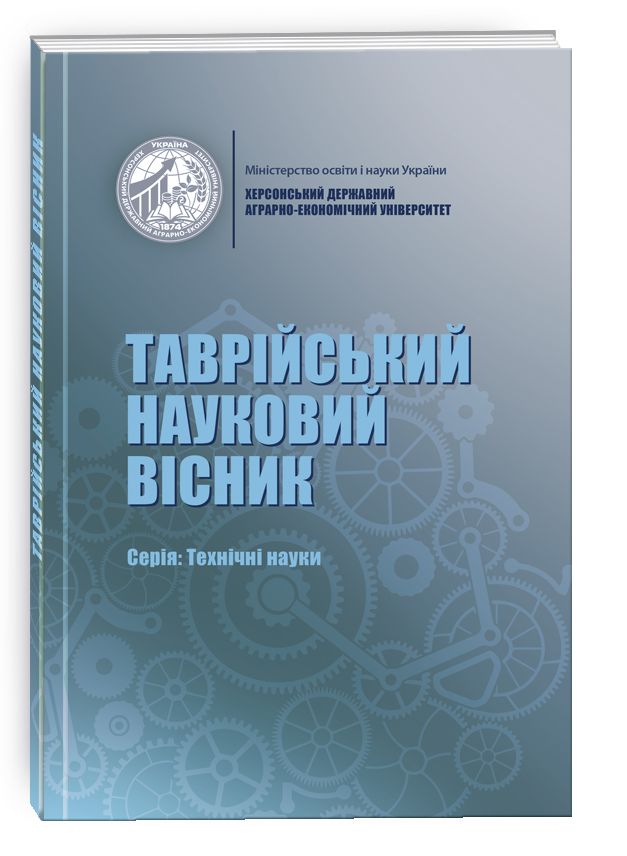APPLICATION OF IRON-CONTAINING COAGULANTS FOR PURIFICATION OF RIVER WATER IN THE COLD SEASON
DOI:
https://doi.org/10.32782/tnv-tech.2023.4.25Keywords:
coagulation purification, drinking water, purification effect, iron-containing coagulantsAbstract
The classic technology of river water purification is based on the use of aluminum sulfate as a coagulant. However, as a result of increasing requirements for the content of residual aluminum in drinking water, the question of replacing aluminum-containing coagulants with safer ones arises. This is especially relevant for the cold season, when the hydration of aluminum hydroxide sol increases sharply and the content of residual aluminum in drinking water increases. The purpose of this work was to study the use of several variants of iron-containing coagulants for cleaning river water in the cold season, as well as their combination. Analyzing the obtained results of water purification studies with iron (III) chloride FeCl3, for water t=+5°C, we can conclude that the lowest values of turbidity and color are achieved with a dosage of FeCl3 coagulant of 35 mg/dm³ and are 50 mg/dm³ and 1,0º PKSH, respectively. Thus, the purified water does not meet the requirements of DSanPiN 2.2.4-171-10 in terms of turbidity, but the color is within the normative values. Experimental studies have shown that ferric chloride coagulant effectively discolors river water at low temperatures. Purification of water with iron sulfate (ІІІ) Fe2(SO4)3 at t of water +6°C showed that the lowest turbidity values are achieved when the Fe2(SO4)3 reagent consumption is 35 mg/dm³ – turbidity is 37,5 mg/dm³, which is better than with FeCl3, but significantly exceeds the norm. The minimum values of chroma are recorded for Fe2(SO4)3 consumption of 25 mg/dm³ and are 12º PKSH, which fully meets the requirements for drinking water. The calculated effect of coagulation water treatment with iron (III) sulfate illustrates a better water clarification result than for iron chloride. The efficiency of cold water purification with the mixed coagulant Fe2(SO4)3+FeCl3 is much higher than when working with each of these coagulants separately. The lowest indicators of turbidity and color were observed when the amount of coagulant used was 25 mg/dm³ and were: turbidity – 1.08 mg/dm³, color – 1.85º PKSH. A synergistic effect occurs – the properties of each are strengthened. Separately, iron (III) chloride has better decolorizing properties, and iron (III) sulfate clarifies water more effectively. Their joint action is manifested in high-quality cleaning according to both indicators.
References
Реалії cьогодення та перспективи майбутнього підготовки питної та технологічної води / А. А. Долінський, О. М. Ободович, Н. А. Гусятинська, В. В. Си- доренко. Наукові праці НУХТ. 2018. Том 23, № 2. С. 247–255. http://sw.nuft.edu.ua/Archiv/2018/swnuft_24_2.pdf.
Запольский А. К. Физико-химическая теория коагуляционной очистки воды : монография. Житомир : ЖНАЭУ, 2013. 71 c.
Шкавро З. М., Антонюк, Н. Г. Теорія і практика використання коагулянтів у технології водоочищення. Наукові записки. 2014. Т. 157. С. 65–78.
ASP_meta&C21COM=S&2_S21P03=FILA=&2_S21STR=NaUKMAchem_2014_157_13.
Душкин С.С., Благодарная Г.И. Разработка научных основ ресурсосберегающих технологий подготовки экологически чистой питьевой воды : монография. Харьков : ХНАГХ, 2009. 95 с.
Запольський А.К. Очистка воды коагулированием : монографія. Каменец-Подольський : ЧП «Медоборы-2006», 2011. 296 с.
Эффективность использования смешанных реагентов на основе солей алюминия и железа для очистки воды / А. В. Мамченко, Н.Г. Герасименко, И.И. Дешко, Т.А. Пахарь. Химия и технология воды. 2006. T. 6, № 6. С. 582–592.
Гусятинська Н. А., Деменюк О. М., Шульга С. А. Ефективність застосування поліоксихлориду алюмінію для очищення питної води. Наукові праці НУХТ. 2022. Том 28, № 6. С. 125–136.
ДСанПіН 2.2.4-171-10. Державні санітарні норми та правила «Гігієнічні вимоги до води питної, призначеної для споживання людиною». 2010. https://zakon.rada.gov.ua/laws/show/z0452-10#Text.







